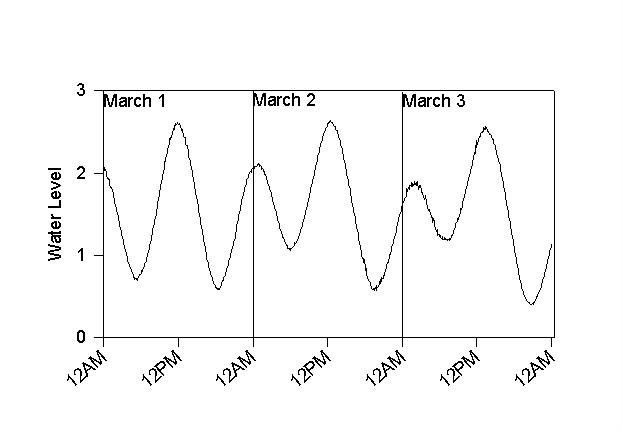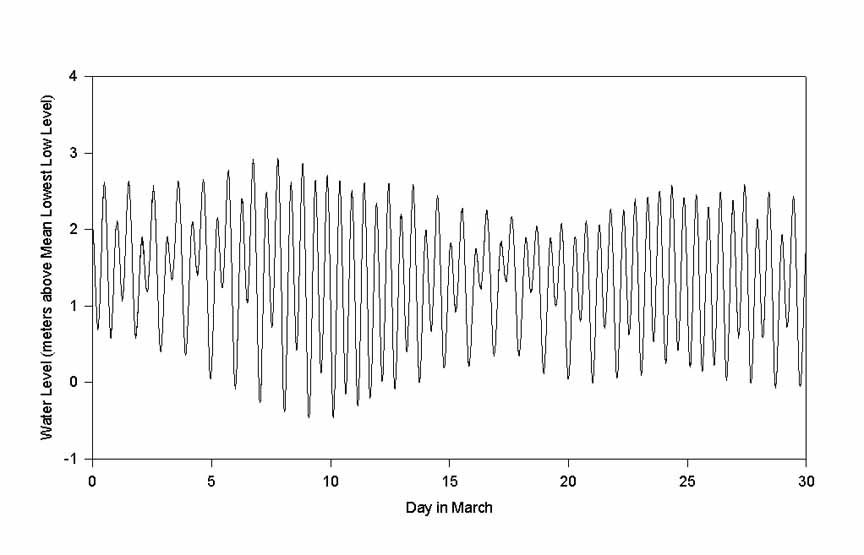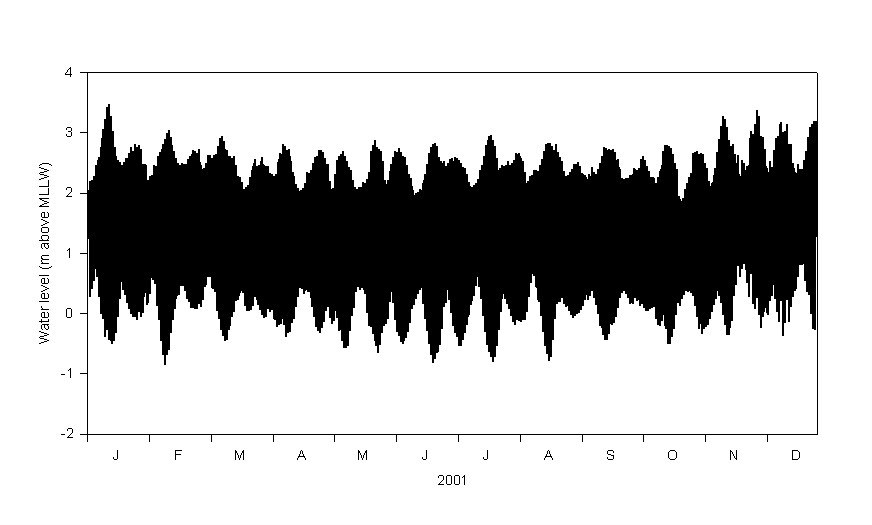
| MadSci Network: Earth Sciences |
Hi Patrick:
That's a good question! Tides are caused by the gravitational pull of the moon, sun, and other bodies in our solar system on the ocean. You can find out more about tides from this answer from our archives (and the links within).
The biggest influence on the tides is the moon. The moon is the reason we get two tides per day, and those tides are about 12.5 hours apart. That causes the time of the high and low tides to change by about half an hour per day. As I mentioned, the sun also has an influence, though the period of the sun's pull is about 12 hours. This causes what we call the spring-neap cycle, where the height reached by high and low tides moves up and down. There are numerous other components that have much smaller influences and longer time periods that are caused by variations in the orbit of the earth and moon around the sun. If you're interested in that, have a look at the links from the answer I mentioned above.
I see you're from Albany, so I'll show you an example from a spot close to you. The National Oceanic & Atmospheric Administration(NOAA) has a huge network of tide guages across the US, and most of it is available for download (here). There happens to be a station at South Beach, Oregon (just south of Newport), and I've taken some of the data for that station.
Among the data available are measurements of water level made every six
minutes. Let's have a look at sea level
over three days at the beginning of March (all the data I'm using is from
2001- this year's data isn't available yet):

You can see the high and low tides, and you can also see how the peaks occur a little later each day.
What we can do next is look over a longer period, so here's the entire
month of March:

This shows really nicely how the height of the high and low tides move up and down over the spring/neap cycle. Also note the units of height I've used, the Mean Lower Low Water level. If you look for the period of about the 6th to the 12th of March, you can see that the lowest low tides actually fell below zero. Those tides were "below average" and might correspond to the kind of conditions you described.
Just for kicks, I've plotted up the sea height for the entire year of
2001. This time I've used the hourly average sea height, because
the six minute observations makes for a lot of data!

Even with the hourly averages, there is too much data to see any of the finer structure. However, you can see that there are several low tide periods over the year- there is the one I showed you for March, some even lower tides in February, and then a few other quite low tide periods in the summer.
As well as past measurements, NOAA uses tide models to predict tides in various places. You can have predictions calculated for you here, so you can plan your beachcombing expeditions for when there is a very low tide.
Hope that helps!
Rob Campbell, MAD Scientist
Try the links in the MadSci Library for more information on Earth Sciences.